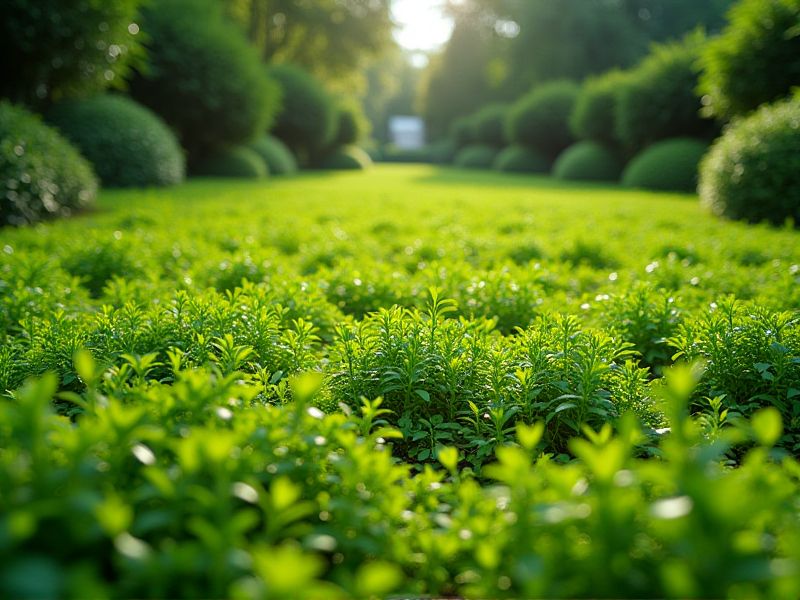
Creeping plants, such as Creeping Thyme and English Ivy, are ideal for filling gaps in garden landscapes, creating lush ground cover that suppresses weeds. These low-growing plants not only enhance visual appeal but also promote soil health by preventing erosion through their dense root systems. Their adaptability to various light conditions enables them to thrive in both sunny and shaded areas, making them versatile additions to your garden. Among the benefits, many creeping varieties attract pollinators, contributing to a biodiverse ecosystem. Incorporating these plants can transform bare patches into vibrant, green areas, enriching your outdoor space.
List of some Creeping plants that fill spaces
- Creeping Jenny (Lysimachia nummularia)
- Sweet Woodruff (Galium odoratum)
- Creeping Thyme (Thymus serpyllum)
- Vinca Minor (Vinca minor)
- Ajuga (Ajuga reptans)
- Creeping Phlox (Phlox subulata)
- Ivy (Hedera helix)
- Woolly Thyme (Thymus pseudolanuginosus)
- Blue Star Creeper (Isotoma fluviatilis)
- Brass Buttons (Leptinella squalida)
Important things about Creeping plants that fill spaces
Growth Habits
Creeping plants are excellent choices for gardeners looking to fill spaces quickly and efficiently. Varieties like Creeping Thyme and Sedum not only offer vibrant colors and textures but also thrive in a range of soil conditions, making them low-maintenance options for ground cover. These plants often spread through runners, allowing them to cover vast areas and suppress weeds naturally. By incorporating creeping plants into your landscape, you can create lush, green carpets that enhance the aesthetic appeal and ecological health of your garden.
Light Requirements
Creeping plants thrive in various light conditions, making them ideal for filling empty spaces in gardens or landscapes. Many varieties, such as Creeping Thyme and Irish Moss, flourish in full sunlight, rapidly spreading to create lush green carpets. Others like Creeping Juniper and Ground Morning Glory can tolerate partial shade, providing versatility in diverse environmental settings. Assessing your area's light availability will help you choose the best creeping plants to ensure vibrant growth and effective ground coverage, enhancing your outdoor aesthetics.
Watering Needs
Creeping plants, such as Creeping Thyme and Sedum, require varying levels of watering based on their specific needs and environmental conditions. Generally, these drought-tolerant species thrive with infrequent watering once established, making them ideal for low-maintenance gardens. It's essential to water deeply but less frequently to encourage strong root development, allowing your ground cover to flourish. Monitoring soil moisture levels can help ensure your creeping plants remain healthy and vibrant throughout the growing season.
Soil Preferences
Creeping plants thrive in a variety of soil conditions, but they typically prefer well-draining soils rich in organic matter. Species like Creeping Thyme and Irish Moss excel in sandy or loamy soils that allow excess water to drain while retaining moisture for the roots. Incorporating compost can enhance soil fertility, promoting robust growth and vibrant blooms among these space-filling plants. When choosing creeping plants for your garden, consider their specific soil requirements to ensure optimal health and coverage.
Maintenance Requirements
Creeping plants, such as creeping thyme and ivy, require minimal maintenance, making them ideal for filling ground spaces in gardens and landscapes. Regular watering during dry spells helps establish their roots, while occasional trimming keeps them in check and encourages denser growth. Fertilizing in early spring boosts their vigor, promoting lush green coverage and vibrant blooms. You can also benefit from mulching around these plants to retain moisture and suppress weeds, ensuring a thriving and low-effort green space.
Invasive Potential
Creeping plants, such as English ivy and ground morning glory, possess invasive potential due to their rapid growth and ability to adapt to various environments. These species can quickly spread, filling spaces by smothering native vegetation and disrupting local ecosystems. You may notice that their extensive root systems and climbing habits enable them to dominate landscapes, often leading to reduced biodiversity. Managing these invasive plants requires consistent monitoring and removal efforts to protect the integrity of native habitats.
Seasonal Changes
Creeping plants, such as ivy, creeping thyme, and ground cover roses, transform outdoor spaces with their lush green foliage and vibrant flowers, adapting beautifully to seasonal changes. In spring, these plants emerge with fresh growth, providing a soft carpet of color that brightens gardens and pathways. As summer approaches, they thrive, creating cooling shaded areas and attracting pollinators like bees and butterflies. In autumn, the foliage of many creeping varieties may change to stunning hues of red and orange, offering a stunning visual display while also retaining soil moisture and reducing weeds.
Suitable Climates
Creeping plants thrive in a variety of climates, with optimal growth occurring in temperate to subtropical regions. These resilient plants, including varieties like creeping thyme and moss phlox, excel in well-drained soil, making them ideal for garden borders or rock gardens. In cooler climates, they can flourish in partial shade, while warmer areas benefit from full sun exposure to achieve lush green coverage. Incorporating these low-maintenance species into your landscape not only beautifies your outdoor space but also minimizes soil erosion and weed growth.
Pest And Disease Resistance
Creeping plants like creeping thyme and clover are excellent choices for ground cover due to their resilience against pests and diseases. These low-growing species not only fill spaces but also suppress weeds, reducing the need for chemical herbicides. Many creeping plants possess natural antifungal and antibacterial properties, making them less susceptible to common plant diseases. Choosing these resilient varieties can help you maintain a healthy garden ecosystem while minimizing maintenance and chemical usage.
Aesthetic Appeal
Creeping plants, such as English Ivy and Creeping Thyme, offer both aesthetic charm and functional benefits for landscaping. Their ability to cover bare walls, rocks, or ground quickly transforms any space into a lush green oasis, enhancing your garden design. These low-maintenance plants not only add visual interest but also help prevent soil erosion, making them ideal for slopes and difficult areas. Incorporating these versatile creepers can create a warm, inviting atmosphere while providing ecological advantages, like attracting pollinators and improving air quality.
